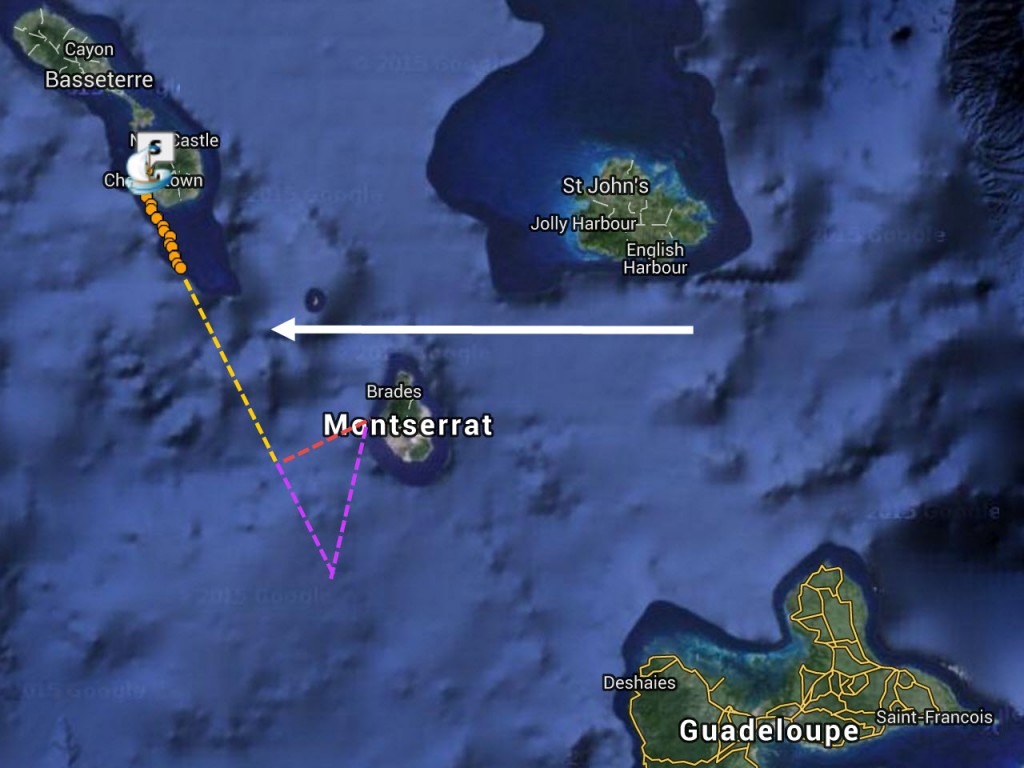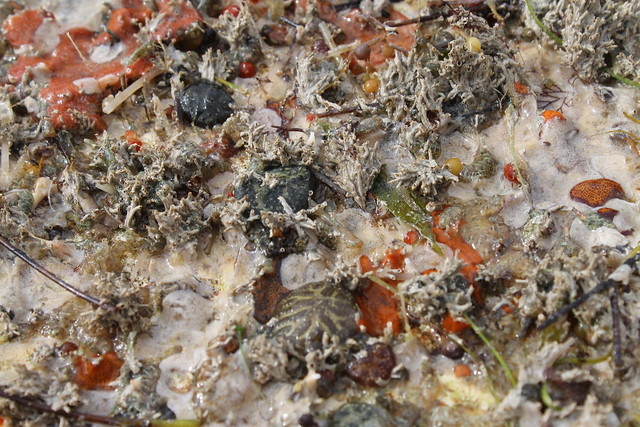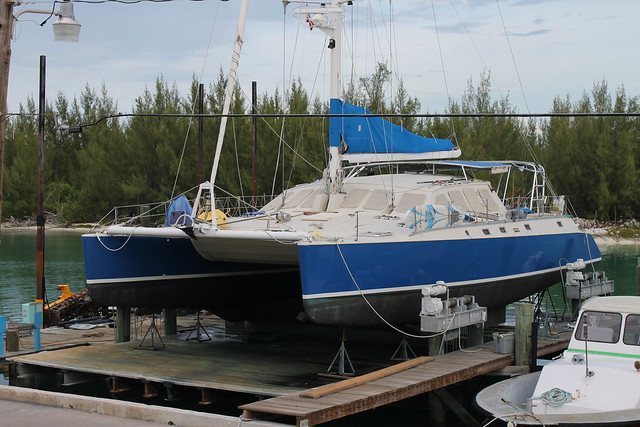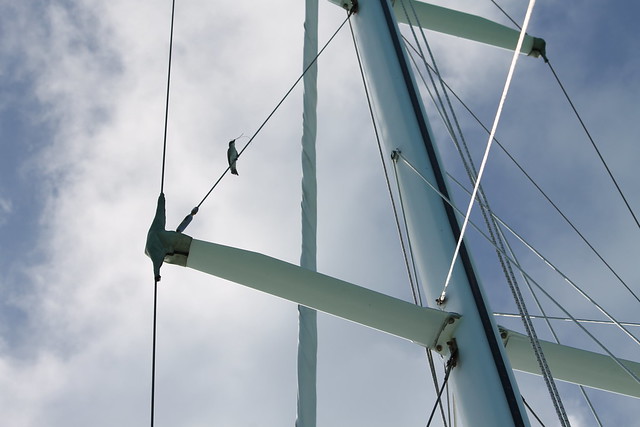I tend not to write much when there are boat projects underway. I don’t think many people are interested in reading about them, and I’m too mentally occupied to write about anything else.
Tanya says I need to write more, so I figured I’d at least give a high-level run-down of what has been changed on the boat recently. I could write a big post about each of these, but I probably won’t. So use the Contact page if you want more details.
Air Conditioning – This project was actually finished last spring, but I don’t think we ever talked about it. We pulled out the old split-gas system and put in 5 separate combo units. We have a big pump in each stern and use relay boxes for the units to demand water. The pumps feed manifolds that have valves to isolate each unit, and dedicated ports so I can circulate acid occasionally. The return manifolds have eductors which use the Venturi principle to suck the condensate water out of the pans. I put little float switches in the pans to sound alarms in case they back up. The units themselves are installed in semi-airtight boxes so we can filter the air. It’s amazing how much dust we generate.
Instruments – We took a phased approach that was ongoing for a long time, but is now complete. I chose Simrad/B&G because I was excited about what they were doing with FMCW radar, the sailing features in the Zeus chartplotters, and their reputation for autopilots. We also replaced the instrument displays, the VHF, and added an AIS transceiver. Everything is native NMEA2000. The indoor and outdoor chartplotters are networked together, so they can share charts, waypoints, and the radar; and networked with the rest of the boat, so we can view and control them from Wi-Fi tablets. I expect to rest better when I can open one eye and see a mirrored chartplotter display from my bunk.
Mainsheets – We used to have a 14-foot mainsheet traveler across the back of our cockpit. I originally viewed that traveler as a mark of awesomeness, but living with it was another matter entirely. It had a continuous-line 6:1 adjustment that was hard to use, the cars were noisy when the wind was light, and I’d been worried for years that the thing was going to take a kid’s fingers off. We continued to use it, but usually with the addition of a preventer to “triangulate” the boom. The final straw came when we began to reimagine the cockpit for better seating and enclosure. I removed the traveler and replaced it with dual 3:1 mainsheets. I decided to have dedicated winches available for both the main and spinnaker sheets, which necessitated a little winch rearrangement am still in the midst of.
Hardtop – We built a hardtop to go over the cockpit. The structure we built a few years ago was designed to support a hardtop, but initially we only covered it with fabric laced to the edges. Even with fabric, this ranks as one of the best all-time improvements we’ve made to the boat. The new full-solid top radiates less heat, looks better, allows rain catchment, and provides for attachment of better curtains to help keep the elements out of the cockpit. But it was A LOT of work.
Bowsprit – I’m planning to update our sail inventory with something in the asymmetrical off-wind category. While it may not be strictly necessary, I decided I wanted a bowsprit. For $100 in materials, $100 for welding, and $100 for painting, it was surprisingly easy and inexpensive. I still have to install the padeyes in the bows for the guys that hold it down.
Rigging – The big ticket item has been the mast re-rig. This was just maintenance, but very important. You want to fix it before it fails. We replaced the standing rigging that holds the mast up, the electrical wiring, antennas and conductors, stripped all the hardware off of the mast and repainted it. The only real changes we made were trimming down the step for the old radar, and adding a small crane to the front of the masthead to support a spinnaker furler. We also replaced the plastic sheaves in the boom for some with ball bearings to try and eliminate an annoying squeak when we’re under sail.
There have been a lot of other little things done, but those are the big ones I can think of off-hand. Of course, we have more on the drawing board.
New Sail – The code zero/gennaker/screecher/spinnaker has already been mentioned. This will be on a furler on the end of the bowsprit. We currently have a symmetrical spinnaker in a sock. I expect the new sail to eminently more useful and usable, which should translate into more sailing.
Stern Protection – Our sterns are constantly being bashed by docks and dinghies, and I often envy the protective cages you sometimes see on the back of workboats. I’ve got a design and very reasonable quote from the local welder to add some reinforced tubing around our sterns. It would also provide handholds for people in the water and attachment points for fenders and towables. I love the idea, but I’m always hesitant to make a major change.
New Dinghy – Our 12-foot RIB and 25hp 2-stroke have seen some hard years. Sam and I took them fishing this past week. The motor was initially very grumpy (but got over it) and a fish managed to puncture the dinghy in two places. I applied my first patches ever, and they seem to be holding. But there’s a very “tired” feeling coming from them. I also think we should go up a size. A 13-footer with a 40 sounds about right.
New Watermaker – We’ve outgrown our Spectra. Spectras are great machines, but they’re built for high-efficiency, not necessarily endurance. We spend about $1,000/year keeping ours running. We’ve had an expert out to check our install, and the consensus appears to be that we’re just running it too hard. We have to run it about 5 hours a day to make our water quota, and being in coastal water doesn’t help any. We may squeeze another cruise out of the Spectra, but we’re eventually going to switch to a higher capacity high-pressure design that can make our daily water during the generator run.
New Batteries – This one has been on the table for a while. Our Lifeline AGMs are nearing their end of life. We are definitely going to switch to Lithium, which I am very much looking forward to. It’s the kind of project that has to be done proactively and probably while at the dock.
Cockpit Redesign – The cockpit has to support the functions of operating the boat when we’re underway, and regular life when we’re not. It doesn’t really do either very well. We’re trying to think outside the box about the cockpit design, even to the point of questioning the necessity of a helm seat. I think the kids sit there more than I do.
This list might seem overwhelming to some, but boat projects sustain me. I’d be bored without them. My only regret is that I have to keep making money to afford them.
We typically like to keep our life a mix of moving and sitting, and our ratio is a little skewed right now, but that will get straightened out eventually. We have to find something to do with ourselves this summer, but we’re gearing up for a bigger trip in the fall.







